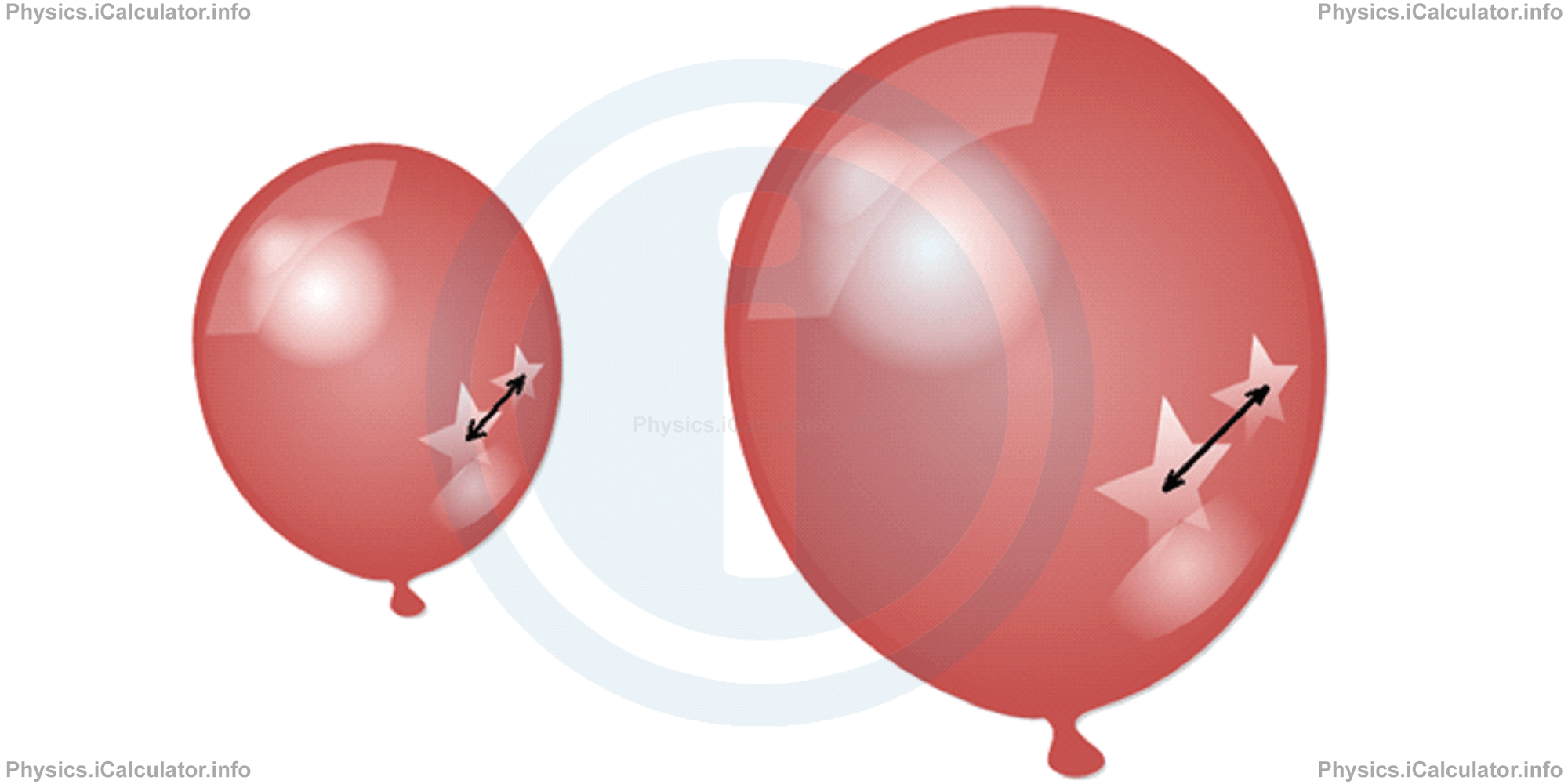Menu
Physics Lesson 22.9.4 - Models of the Expanding Universe
Please provide a rating, it takes seconds and helps us to keep this resource free for all to use
Welcome to our Physics lesson on Models of the Expanding Universe, this is the fourth lesson of our suite of physics lessons covering the topic of Expansion of the Universe, you can find links to the other lessons within this tutorial and access additional physics learning resources below this lesson.
Models of the Expanding Universe
At first glance, it looks like Hubble's Law puts us (the observers on Earth) in a preferred position in the Universe. It looks like the centre of the Universe is in our galaxy and all remote galaxies only move away from us. However, in reality this is not true. It does not take too much to convince ourselves that the linear dependence of distance from receding velocity is a confirmation of the fact that no preferred positions exist in the universe. All observers in different galaxies would find the same linear relationship between receding velocity and distance and they would find themselves at the centre of a set of remote galaxies moving away from each other.
As we did in the previous tutorial, we use the 2-D model to illustrate the expanding model of the Universe. Again, for convenience, we use the spherical surface as an illustration of this model. Hence, the universe looks like an inflating balloon, where the galaxies are drawn on its outer surface.

The five-point stars painted on the balloon represent the galaxies. When the balloon inflates more, the distance between these five-point stars increases. This shows that the balloon is expanding. The same thing occurs to the universe as well. When the universe is expanding, galaxies move away from each other. If two galaxies move towards each other (in blue-shift phenomenon), this is an exception from the general rule, caused by any powerful explosion or something similar.
Obviously, if the balloon were made of solid material inside, the five-point stars in the interior part of balloon would recede slower compared to those on the outer surface. In other words, the more the balloon inflates, the faster the five-point stars move away from each other. The receding speed obeys Hubble's Law adapted for the specific balloon.
Given the information above it is clear that the Universe is unquestionably expanding. Hubble's Law acts as a confirmation tool for this already confirmed hypothesis. The Universe therefore has a radius R(t) that varies (increases) with time.
If we turn the "tape" of the Universe film backwards, it is clear that the universe once had an origin, i.e. at a certain instant (at t = 0) the radius of universe has been zero [R(0) = 0]. This instant represents the birth of Universe. Since matter was concentrated in a small region of space, there must have been a huge explosion sufficient to make the pieces produced by this process spread away from each other in all directions. This explosion is known as the Big Bang and it marks the beginning of the Universe. All thermodynamic parameters such as density, pressure, temperature and energy must have had colossal values before and immediately after the Big Bang. In the next guides, we will explain in detail the chronology of events occurred at the first instants after the Big Bang and the corresponding stages involved.
You have reached the end of Physics lesson 22.9.4 Models of the Expanding Universe. There are 6 lessons in this physics tutorial covering Expansion of the Universe, you can access all the lessons from this tutorial below.
More Expansion of the Universe Lessons and Learning Resources
Whats next?
Enjoy the "Models of the Expanding Universe" physics lesson? People who liked the "Expansion of the Universe lesson found the following resources useful:
- Modelling Feedback. Helps other - Leave a rating for this modelling (see below)
- Cosmology Physics tutorial: Expansion of the Universe. Read the Expansion of the Universe physics tutorial and build your physics knowledge of Cosmology
- Cosmology Revision Notes: Expansion of the Universe. Print the notes so you can revise the key points covered in the physics tutorial for Expansion of the Universe
- Cosmology Practice Questions: Expansion of the Universe. Test and improve your knowledge of Expansion of the Universe with example questins and answers
- Check your calculations for Cosmology questions with our excellent Cosmology calculators which contain full equations and calculations clearly displayed line by line. See the Cosmology Calculators by iCalculator™ below.
- Continuing learning cosmology - read our next physics tutorial: Big Bang Model and Temperature
Help others Learning Physics just like you
Please provide a rating, it takes seconds and helps us to keep this resource free for all to use
We hope you found this Physics lesson "Expansion of the Universe" useful. If you did it would be great if you could spare the time to rate this physics lesson (simply click on the number of stars that match your assessment of this physics learning aide) and/or share on social media, this helps us identify popular tutorials and calculators and expand our free learning resources to support our users around the world have free access to expand their knowledge of physics and other disciplines.